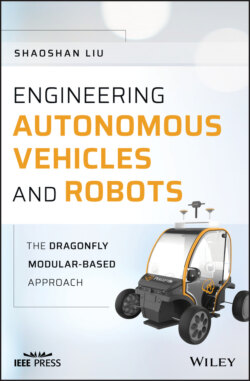Читать книгу Engineering Autonomous Vehicles and Robots - Shaoshan Liu - Страница 17
1.3.3 Extending Existing Digital Maps
ОглавлениеCreating and maintaining HD maps is another important component of deployment costs. Crowd-sourcing the data for creating HD maps has been proposed. However, this would require vehicles with LiDAR units, and we have already seen that LiDARs are extremely expensive and thus not ready for large-scale deployment. On the other hand, crowd-sourcing visual data is a very practical solution as many cars today are already equipped with cameras.
Hence, instead of building HD maps from scratch, our philosophy is to enhance existing digital maps with visual information to achieve decimeter-level accuracy. These are called HPVMs. To effectively help with vehicle localization, HPVMs consists of multiple layers:
1 The bottom layer can be any of the existing digital maps, such as Open Street Map; this bottom layer has a resolution of about 1 m.
2 The second layer is the ground feature layer. It records the visual features from the road surfaces to improve mapping resolution to the decimeter level. The ground feature layer is particularly useful when in crowded city environments where the surroundings are filled with other vehicles and pedestrians.
3 The third layer is the spatial feature layer, which records the visual features from the environments; this provides more visual features compared with the ground feature layer. It also has a mapping resolution at the decimeter level. The spatial feature layer is particularly useful in less-crowded open environments such as the countryside.
4 The fourth layer is the semantic layer, which contains lane labels, traffic light and traffic sign labels, etc. The semantic layer aids vehicles in making planning decisions such as routing.
